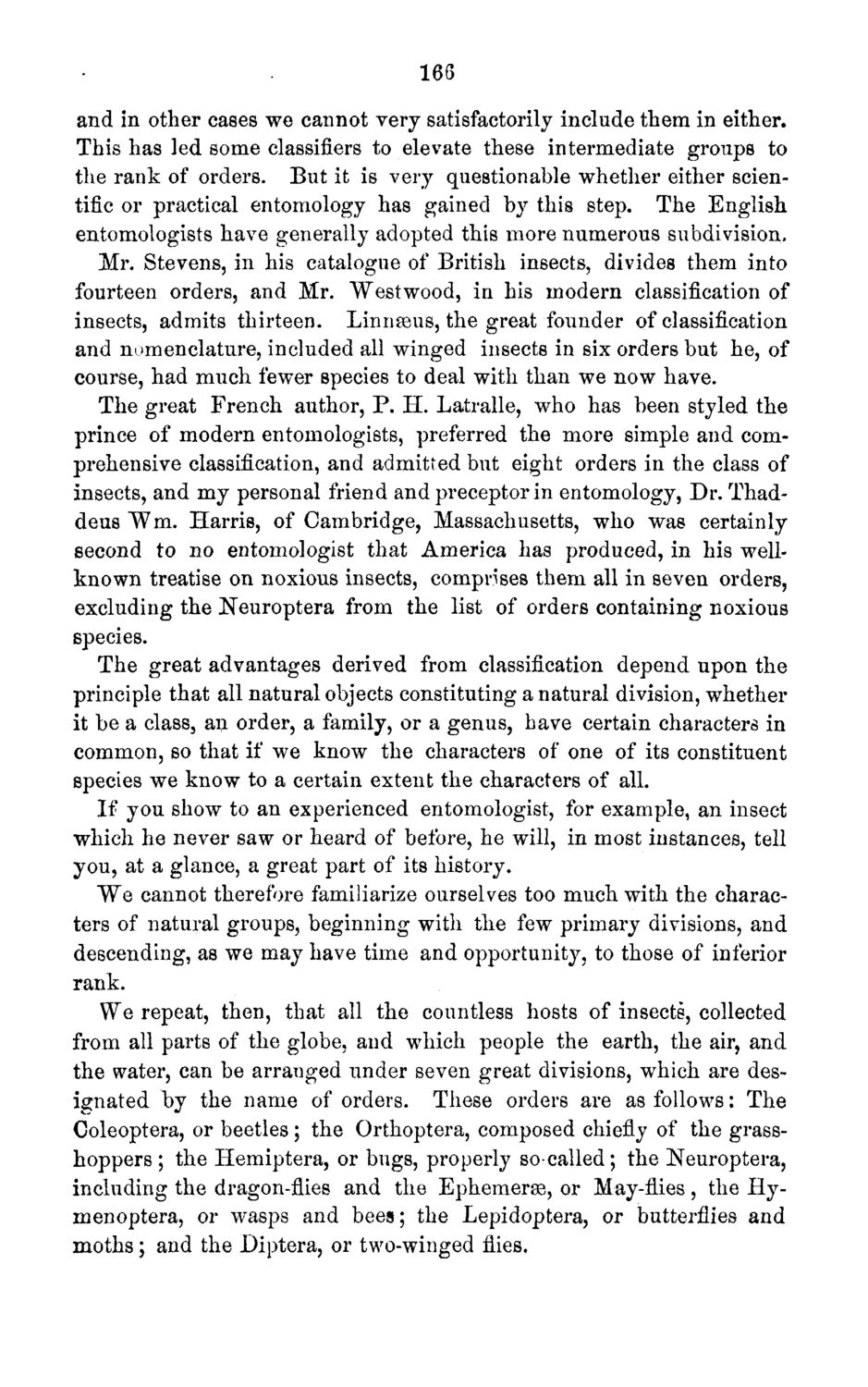| |
| |
Caption: Board of Trustees Minutes - 1871
This is a reduced-resolution page image for fast online browsing.

EXTRACTED TEXT FROM PAGE:
166 and in other cases we cannot very satisfactorily include them in either. This has led some classifiers to elevate these intermediate groups to the rank of orders. But it is very questionable whether either scientific or practical entomology has gained by this step. The English entomologists have generally adopted this more numerous subdivision. Mr. Stevens, in his catalogue of British insects, divides them into fourteen orders, and Mr. Westwood, in his modern classification of insects, admits thirteen. Linnaeus, the great founder of classification and nomenclature, included all winged insects in six orders but he, of course, had much fewer species to deal with than we now have. The great French author, P . I i . Latralle, who has been styled the prince of modern entomologists, preferred the more simple and comprehensive classification, and admitted but eight orders in the class of insects, and my personal friend and preceptor in entomology, Dr. Thaddeus ¥ m . Harris, of Cambridge, Massachusetts, who was certainly second to no entomologist that America has produced, in his wellknown treatise on noxious insects, comprises them all in seven orders, excluding the Neuroptera from the list of orders containing noxious species. The great advantages derived from classification depend upon the principle that all natural objects constituting a natural division, whether it be a class, an order, a family, or a genus, have certain characters in common, so that if we know the characters of one of its constituent species we know to a certain extent the characters of all. If you show to an experienced entomologist, for example, an insect which he never saw or heard of before, he will, in most instances, tell you, at a glance, a great part of its history. We cannot therefore familiarize ourselves too much with the characters of natural groups, beginning with the few primary divisions, and descending, as we may have time and opportunity, to those of inferior rank. We repeat, then, that all the countless hosts of insects, collected from all parts of the globe, and which people the earth, the air, and the water, can be arranged under seven great divisions, which are designated by the name of orders. These orders are as follows: The Coleoptera, or beetles; the Orthoptera, composed chiefly of the grasshoppers ; the Hemiptera, or bugs, properly so-called; the Neuroptera, including the dragon-flies and the Ephemerae, or May-flies, the Hymenoptera, or wasps and bees; the Lepidoptera, or butterflies and moths; and the Diptera, or two-winged flies.
| |